Let the little ones use the colorful, engaging books which come with embark as a reference point for creating words with the magnetic letters. Easy to set up, fun, easy to clean up! Helps with upper and lower case differentiation, spelling, writing left to right, sounds and pre-reading scaffolding.
Tag Archives: bend-la pine schools online
Are Central Oregon kindergarteners ready for school?
Image
See article from last week’s Bend Bulletin below. Thought our Pre-K families might be interested in this topic!
*****************************************************************************************************************
Are Central Oregon kindergarteners ready for school?
By Alandra Johnson • The Bulletin Published May 23, 2014 at 12:11AM
Want to know how incoming kindergarteners fared at your school? Visit http://www.ode.state.or.us/search/page/?=3908 and click on 2013-2014 Kindergarten Assessment Results.
Children enter kindergarten each year with highly varying degrees of skills. Some can read and perform addition. Others can’t recognize a single letter or shape. Some can sit in circle time and share with others, while it’s evident other children have rarely been around other kids.
“Kids come in across the spectrum,” said Lora Nordquist, assistant superintendent for elementary programs with Bend-La Pine Schools. “There are big gaps.” Those gaps, Nordquist said, “absolutely matter” as the child progresses through school.
In September 2013, for the first time, Oregon required all kindergartners to undergo a standardized assessment to determine how ready they were for school. During the first few weeks of school, teachers measured not only students’ letter and number recognition, but they also assessed the students’ interpersonal skills and self-regulation. While most standardized tests can be seen as a way to evaluate the education system, these tests were meant to assess students’ readiness for school.
The results, released this year, verify what most educators expected.
“There are no surprises here,” said Nordquist.
The results are tricky to parse, as it’s unclear what a “good” score would be, and this being the first year of the tests, there are no previous years to compare the results to. Incoming kindergartners’ scores in Bend-La Pine Schools fared better than the state averages on the tests, as did scores from students in Sisters. Incoming students in Redmond and Crook County fared above in some measures and below state averages in others. Culver scores fell mostly below state averages, as did those in Jefferson County School District.
Kids begin kindergarten with a wide range of abilities and those seem to align closely with socioeconomic status. Nordquist believes the Bend-La Pine schools that fared best were those with the least amount of poverty; students who didn’t fare as well tended to come from higher poverty areas. For example, incoming kindergartners at Highland Magnet School, where 12 percent of students qualify for free and reduced-price lunch, could name four times as many letters on the test compared with students at Roseland Elementary in La Pine, where 89 percent of students qualify for free and reduced-price lunch.
The statewide data also shows an achievement gap between white and Asian students and African-American and Hispanic students begins before students enter school. “It echoes the patterns we see later on. It is helpful to be able to validate that,” said Kara Williams, education specialist with the Oregon Department of Education.
The state and school districts are sorting out how to utilize the data. It may be used to help direct resources to those schools most in need, to help close those gaps. Brett Walker, who works in early learning with ODE, said schools are beginning to reach out to preschools and child care providers to get them thinking about school readiness. “How can we all be working together to make sure kids are coming to school ready to be successful?” said Walker.
Nordquist said the district is currently working with private preschool educators, the Education Service District and Central Oregon Community College to collaborate on kindergarten readiness.
Cheri Rassmussen, principal at Crooked River Elementary School in Prineville, believes the differences shown in the kindergartners’ assessments can persist. Entering students who are not ready for school often end up struggling. “I think it sets a tremendous amount of children up for failure,” said Rassmussen. “We say they will catch up, but they don’t in Prineville, Oregon. They are just not as prepared.”
But that is not to say that parents of incoming kindergartners need to panic or begin drilling their children with flashcards. The good news is there’s a lot parents can do to help children prepare for school — and all of it can be fun.
The test
“The first three or five years of life are really foundational,” said Walker. A student’s destiny is not set by age 5, but school readiness can affect a student’s academic success and life trajectory, he said.
“It’s really important for schools to be ready to meet them where they are,” Walker said.
In the new assessments, students were given a piece of paper printed with 100 uppercase and lowercase letters and asked to name as many letters as they could in 60 seconds. Students were given a similar piece of paper, with letters and letter combinations and asked to name as many letter sounds as they could in 60 seconds. (Williams notes this means the tests do not measure how much students know, but rather how quickly and accurately they can access this information.)
A third test asked students 16 simple numeric and math problems (for instance two circles were shown and students were asked to count the circles and point to the answer.) The other two assessment areas — self-regulation and interpersonal skills — were measured by observations teachers made during the first weeks of school. Teachers evaluated questions such as: Can the student follow directions? Does she get along with her peers? Is he able to follow directions? Can she wait her turn?
Nordquist and some local teachers said these last measures are actually more important than the academic skills. Executive function (as these skills are sometimes referred to) “may be the strongest single predictors in students’ success 20 years later,” according to Nordquist. More than language or number knowledge, she said these executive function skills create “people who can manage time, know how to listen, know how to organize information and get along with others.”
The assessments did not track students’ previous experiences, such as which children attended preschool or those who stayed home. “We definitely see students who it’s clear they have not spent lots of time with other children,” said Nordquist.
Pine Ridge Elementary School kindergarten teacher Kate Kranzush felt the tests didn’t give her any additional information to help drive instruction, but she sees the value of collecting data statewide. Kranzush teaches in a classroom with 13 students who are English language learners and found it hard to watch them struggle with the testing. With the school year winding down, Kranzush says all of her students, including those who couldn’t speak English at the beginning of the year, can now read and write.
She firmly believes behavior and social/emotional factors play the largest role in a student’s school success, not academic knowledge. “Our job is to teach and we can do that,” said Kranzush.
Ilene Olsen, a kindergarten teacher at Miller Elementary School, echoes those sentiments, saying the social piece is the critical part. If one child enters kindergarten able to read and another one cannot, that is not proof that one is smarter than the other, said Olsen.
She says some children from affluent families can have shortcomings in social skills. Olsen says some children arrive at kindergarten unsure of how to play — she tells them to go outside and play and they aren’t sure what to do (Olsen believes too much electronics use could be to blame).
So what should kindergartners know? Rassmussen says ideally, kindergartners would know their letters and to be able to count to 10. They should know shapes and colors. They should be able to tie shoes and snap their pants and they should be able to share.
Olsen likes to see children who are willing to work hard. “Sometimes things are hard and that’s OK. Mistakes are OK. Some kids shut down really easily,” said Olsen.
She hopes parents take time to embrace what she calls “lap time.” Just to sit and snuggle and read books, talk and be together. “Take the pressure off and just enjoy them,” said Olsen.
Kranzush doesn’t want parents to panic. “They’re 5. Let them be 5.” No flashcards, no pressure. She likes to see a child who is ready to learn and be a go-getter.
Crystal Greene, communications director with ODE, said that she hopes parents “feel empowered. There is so much that’s so simple that they can do.”
Parents “don’t need to focus on the test. The test is about the system and to make sure it’s serving children as well as possible,” said Greene.
— Reporter: 541-617-7860, ajohnson@bendbulletin.com
Fall 2014: embark Pre-K w/ Bend-La Pine Schools Online! Enrolling Now
Image
Making Pre-School Prep DVD Interactive
Image
Embark Buddies on iPads!
Image
Meet the Sight Words
Image
Learning to read- that is, to actually decode, to build phonemic awareness, and to memorize certain sound and word patterns, is a complex process. I certainly do not claim to understand how it works and I have seen that it often happens differently for different children. And it definitely happens at different ages and because of different contexts that make it appealing to each kid at a certain point in their childhood.
While I do agree that using consistent verbiage when talking to an emerging reader about the process of reading, and that consistent use of just a few learn-to-read tools can help keep it simple for the learner, I also feel there is a place for some variety. Additionally, having a few options lying about can allow an emerging reader to pick something they want to use- not something you want them to use. 
It gets expensive collecting these neat learn-to-read tools- let’s be honest, it’s a huge consumer market these days. Somehow we’ve all been scared into fretting that our child will likely never learn to read without them.
In the past 6 weeks, the husband and I decided to invest pretty heavily in some supplemental reading tools. Because about 10 weeks ago we had that parent moment where we were like, “Oh shoot. We were probably supposed to teach that oldest kid to read awhile back. And now she’s five. Shoot! Five and a half, actually! We should do something. Yup. We are totally going to do something.”
My husband was ready to just find some easy books and go 1800’s style with the process. I, on the other hand, wanted to throw money at the problem and hope it would “just happen” without much effort. Okay, that’s not really what I wanted, but I am gadget-curious, to say the least.
 Enter the Preschool Prep DVD series titled “Meet the Sight Words”- levels 1, 2, and 3.
Enter the Preschool Prep DVD series titled “Meet the Sight Words”- levels 1, 2, and 3.
We are so fortunate, oh so fortunate, to have both a Nana and a Noni who live in town. The Nana has been a SMART volunteer in the past (Start Making a Reader Today) and has really worked with all 3 kids, since birth, on all of the little pre-reading steps we know help. She has consistently taken all the kids to story time at the library and checked out new books each week. This Nana, she is keen on research and she does her internet homework! She’s quite the savvy consumer and she’ll read reviews, consumer reports and the like about products before she buys. And she’s always got an eye towards value- while not frugal, she cares very much not to waste her American dollars. So in the midst of our “Oh Shoot! Quick! Learn to Read!” whirlwind, she indicated she’d bought a Sight Words DVD set for the kids for Christmas. (Somebody please graciously correct me in a comment if I am wrong, but I feel like one area where embarK pre-k is lacking is mega-site words practice.)
We’ve been using the series since December 26th, usually about 2-3 times a week. I have to say, I am more than a little shocked at how well it seems to be working. 
Now, when we sit down to do the 1800’s style portion of learning to read, the 5 year old is identifying tons of words in the books that she memorized from the movie and she’s pronouncing them properly. It’s awesome!
So, if you’re looking for a little extra nudge with sight words, and a DVD doesn’t offend every bone in your body plus all of your sophisticated sensibilities, this might be an option for you.
Happy Learning!
Sweet and Seasonal Learning: The Space|Time Continuum
Image
The embarK calendar tool + Advent calendars =
a sweet way to learn about dates and time!
 Advent calendars are a tradition in our house and each year I am amazed at how excited the kids are about them. Every morning they are squealing for the chance to search with tiny eyes and roaming hands for today’s date and pop open the cheap cardboard slot with the world’s worst (and smallest) chocolate treat.
Advent calendars are a tradition in our house and each year I am amazed at how excited the kids are about them. Every morning they are squealing for the chance to search with tiny eyes and roaming hands for today’s date and pop open the cheap cardboard slot with the world’s worst (and smallest) chocolate treat.
So this year I am channeling the focus! Before the calendars come out, the laptop comes out. We navigate to the Calendar within Tools and click “Add Today’s Information”.
We customized our settings so we’re now prompted each day to click on today’s date, yesterday and tomorrow. While the 5 year old is already comfortable with these concepts, the repetitive exposure is really helping the 3 year old and 2 year old with understanding days, weeks and months and how a calendars is a way to represent time sequencing.
 After we work on the dates, we check the weather out the window or in the backyard, we then go to weather.com and look at the temperature. (If I ever get my act together, I’ll hang a real thermometer outside the window so we can read that instead!). We enter those items for the day and then dress the little Jack and Jill characters appropriately for the weather. I do wish Jack and Jill had more clothing options. The kids love to dress them but I think within a month the limited choices might become a bit stale.
After we work on the dates, we check the weather out the window or in the backyard, we then go to weather.com and look at the temperature. (If I ever get my act together, I’ll hang a real thermometer outside the window so we can read that instead!). We enter those items for the day and then dress the little Jack and Jill characters appropriately for the weather. I do wish Jack and Jill had more clothing options. The kids love to dress them but I think within a month the limited choices might become a bit stale.
After the fun little structured calendar activity- ta da! the world’s worst chocolate treat is devoured immediately.
The whole process, now just 9 days in, has become a morning routine and takes just a few moments. And because of it I now hear my 3 year old talking accurately about the temperature in degrees- something he was just never prompted to do before. Adjusting the temperature on the thermometer has also prompted him to learn how to click, hold, and drag on the mouse pad, a fine motor skill I frankly would not have thought him capable of. But he was obsessed with learning to do it because he’s fascinated by the adjustable thermometer. The 5 year old is quick with the basics and what I see her learning about is days adding up to weeks and weeks adding up to months. The two year old- let’s be honest, who cares?
There are so many ways we can pair the calendar tool with our daily lives. After advent calendars are done, I’ll be looking at fun ways to work it in every day, all year. Being able to add your own events means you can make it relevant no matter what the season or occasion. Family birthdays, holidays, special trips or activities can all be added and saved making it a record of the family events. It’s fun to look back and see those and it really gives a visual way to show “pas” and “future”- complex concepts that we as adults take for granted.
*********************************************
More about the space-time continuum:
http://einstein.stanford.edu/content/relativity/q411.html
Thanksgiving Day Skits
Variety is the Spice of Life
Image
Need to spice up your Pre-K routine every once in a while?
If you’re comfortable with tech-based options, here are 3 good ones to try:
Starfall | website | multiple content areas | totally free
Hungry Fish | app for iPad | motion math | cost varies from free to $5.99+ depending on features
EdHeads | website | anatomy & medical themed activities | totally free
This octopus, at the Aquarium in Newport, Oregon, doesn’t have anything to do with this post. But you can’t have a post without a picture!
Fall Themed Lessons
Image
I had to share this note and great pictures that I got from one of our embark Pre-K families about a month ago.
“We just finished unit 2 today. We did a fall leaf collage since we are reading a book on fall colors as one of his phonics/sightwords books. We also did Pumpkin faces with the shapes module as an art project. We read a book on pumpkins.We are really loving the school program!”
One of the challenges of choosing to be your child’s teacher is that you have to be everything- including the arts and crafts director- in order to make it all come alive. No excellent program is meant for a small child to sit alone and somehow “learn” in a totally one-dimensional way. When we choose programs like embark, we are also welcoming a commitment to make them come alive as a family. And that is precisely why we choose at-home programs, so that we get to be the ones who help learning come alive.
The inspired fall-themed projects shown here, paired with books and also modules from embark, are a perfect example of what everyday, and every day, thematic, student-centered, multidimensional education can and should look like.
Thanks for sharing!
Poll: Reading Yet?
Image
Building, Making & Creating: Critical Thinking
Image
There are so many engaging ways to explore making, building, and creating. The options are endless. But the option to do that is very important for learning critical thinking skills.
One over-simplified criticism of tech-based tools like embark12 is that it is somehow one dimensional for the learner. Old tech tools from the past were indeed often set-up this way. They were formulaic and had predetermined outcomes. Even if there seemed to be choices, you couldn’t really “make” anything. You knew pretty soon that your true creativity was limited by the tool.
Which is not the case in nature. Outside of the tech world, with our hands, we can build a lot of things with no limit to our creativity (especially if you go wabi sabi!). So I have been particularly excited about the embark features which allow the kids to build things of their own and are truly open ended. Inside the “Tools” tab there is a feature called “Builder”. Inside that, kids can choose to create their own little worlds.
.
The 4yr old loves this! She’s been obsessed with this feature for about the last 3 days!
But as I’ve mentioned before, 3D tools and other people teaching my kids are one thing, but what am I doing to foster building, making, and creating? For me, proper pre-school is neither “on the computer” nor “somewhere else” that I send my kids each day. Pre-school is the time of life when parents get to have the incredible joy of cementing all the fundamental learning blocks they feel are important for life-long success. I wouldn’t send my kids to Schibel Teaching Farm 2 days a week if I didn’t think it was one of the most amazing places on earth. I wouldn’t use embark unless I thought it was worth the screen time it creates. Screen time is not my thing. I’m not against it, but I’m not for it. I choose everything carefully and in addition to that, I know I have to create the larger context for my kids myself.
One of things that is easy and fun to do to show cycles, patterns, and creating, is a raised-bed backyard garden with a few simple veggies and flowers. When the kids aren’t building inside with embark materials, get them building outside with their hands!
 One of our local ag supply stores, formerly Round Butte Seed and now Wilco, has a whole section of seeds designed for our short, cold growing season in the high desert.
One of our local ag supply stores, formerly Round Butte Seed and now Wilco, has a whole section of seeds designed for our short, cold growing season in the high desert.
This spring, the husband and the 4yr old picked out a few choices and made a fun afternoon of planting the rows while the tiny ones napped.
We were delighted, of course, when the first brilliant green lettuce leaves began to poke through and eventually unfurl. Dinner salad from the garden picked by tiny hands is an unparalleled treat. But, we were more than a little skeptical about the other items when, in August, the green beans, beets, and carrots were still holding talks underground and not showing us anything up here!
We sort-of gave up. And, we went away for a week. The super hot week! When we came home, after 7 days of 90 degree weather and no watering, the garden had exploded! We had 5″ long green beans- just like at the store!- and perfect garnet red baby beets- just like at the fancy store!- and darling baby carrots from the laughably and adorably 1/2″ size all the way up to like “real” carrot size!
Now, don’t be confused. My kids do NOT eat beets! Or lettuce! But, they do love green beans and carrots. And the thrill for them of watching them grow and then being able to offer one to Nana or Noni-straight from the patch!- was downright heartwarming for me. and the husband.
Stewardship, building, and creating are key qualities in critical thinkers. There are many, many ways to get there. But in central Oregon, backyard gardens are a great one. If I lived in NYC, I’d have different tips. But I don’t, I live here. And I love it here.
In closing, let me add that witnessing cycles- all the way to their natural end- is another important piece for developing holistic thinkers. See below! The beet greens meet their maker and contribute to the rich soil for next year’s crop. And by crop, I mean 4’x6′ yard box 🙂
Cheese Math?!
Image
Use embark on Your iPad!
Image
 This is an incredibly exciting post to get to share! Many thanks to the crafty and indefatigable Lisa Calicdan for this brilliance.
This is an incredibly exciting post to get to share! Many thanks to the crafty and indefatigable Lisa Calicdan for this brilliance.
If you have an iPad, you cannot use it for embark because Adobe Flash Player will not run on an iPad (and it is required for embark, and many, many, many other cool tools). This has been a huge bummer for millions of iPad users for years.
.
But! for $2.99 you can buy the Puffin app in the app store and fully use embark!
Although I have heard and read that it can be “buggy,” (meaning unreliable at times), I have personally downloaded and used this and can vouch for it’s effectiveness so far. Because we don’t submit assignments through embark, there’s no danger of “losing work” or concerns of that nature. So, if it cuts out here and there, I’m ok with that!
BTW, Puffin is a browser, so you open Puffin, then log in to your K12 account (in the OLS), then click embark from your quick links, then dance around with joy.
Happy embarking!
Notes from the Field
From time to time I will share quotes from our families (only when approved!). See below for some ideas about getting organized!
I’ve been focusing on organizing. I’d like to do the Bend LaPine Online program at least half day, and maybe full day, when [my student] is old enough. But I’m not very organized with a 3 year old in my world. (In an office is totally different!) One thing I love about this program is the opportunity to develop systems before the official school years begin.
In addition to organizing the materials, I also feel protective of them and want to keep them separate. I am a little worried about losing pieces! I bought file boxes for the materials at an office supply store. I went for the convenience of easy-access, lift-off lids. We’ll see if it works for us as the year progresses.
I also found lesson plan books at Target in the Dollar bins, and picked up a couple to help me with pacing and organization. I did like your blog post about the counting beads, and letting them learn through play. I’ll need to remind myself of that!!! And I’ll need to let go of my protectiveness of the materials and let them be playthings as well. 🙂
First Day w Online Activities
Even though I am short on time at the moment, I had to share these pics from this morning.
Let me set the scene: it’s breakfast, we have no plan to do anything, husband decides to log in and check out online activities, see below for what happens next… the only picture missing is the transition of the 4yr old hopping onto Daddy’s lap to get started.
The kids proceeded to spend two hours, TWO HOURS, using the activities. And before you get on your high horse about too much screen time, creating a generation of isolated learners, etc… let me tell you that we then went out for a 2.5 mile family walk, had lunch together in the yard, and are getting ready to go to a BBQ that will likely have about 30 people at it. Including kids. Kids that my kids already know how to talk to, play with, and learn from. So there!
Let me close with this: we were AMAZED at the awesome online curriculum. A MAZED. The voices are easy to listen to, the visuals and interactive activities were engaging and intuitive and the kids quickly figured out how to navigate the system. Please keep in mind that this is the first time my kids have been exposed to technology. Ever. We’ve never let them use our phones, our tablets, or our laptops. All of our friends can attest to this- our motto has been “it’s a tool, not a toy. and also, it’s mine, not yours 🙂 “. We’ve tried to limit that on purpose until it had a purpose. And now it does. And they mastered the basics in under 20 minutes (even using a mouse!).
MAZED. The voices are easy to listen to, the visuals and interactive activities were engaging and intuitive and the kids quickly figured out how to navigate the system. Please keep in mind that this is the first time my kids have been exposed to technology. Ever. We’ve never let them use our phones, our tablets, or our laptops. All of our friends can attest to this- our motto has been “it’s a tool, not a toy. and also, it’s mine, not yours 🙂 “. We’ve tried to limit that on purpose until it had a purpose. And now it does. And they mastered the basics in under 20 minutes (even using a mouse!).
So it started like this, over breakfast: 3yr old wondering what the 4yr old is doing…
Then, it went like this: 3yr old dares to ask, 4 yr old is happy to explain and basically teach…
yr old is happy to explain and basically teach…


Pretty soon, even plastic baby was learning about early European art.I will start a page on here about plastic baby’s adventures. You think you have a resistant learner? Ha! Just try getting anything out of plastic baby.
Then, it ended pretty much like this, you know, just a group of pre-schoolers saying the names of colors out loud when prompted, or repeating the notes of the musical scale when prompted, or learning the basic shapes to draw a fire station with. (and yes, I know it’s “with which to draw a fire station”. I was a high school English teacher in a former life. But sometimes the everyman’s English actually sounds better).
Happy learning to all who started this weekend! I encourage you to play around a lot before you try to go in order or have a plan. I also, BTW, totally let the kids drive which things they did. They were pretty clear early on that me picking for them was, um, to put it nicely, not going to work.
Digital Conversion
Image
Just interesting to me to follow this journey. Cool that our area is willing to branch out- even if it’s not perfect, we have to move forward with things like this!!
Related articles
- Hoodoo CEO’s grant grows Bend-La Pine iPads test (ktvz.com)
- Shepard gift brings iPads to more Bend schools (bendbulletin.com)
Guides and Resources
The embark site indicates there is a teacher guide and an assessment check list (hard copy) with the kit. I know some of you have already found it online and have printed some items out. Please know that I put in a request tonight for those to be sent to all of you. It will likely be a week or more before we can have them but I think it would be useful. In the mean time, I will try to figure out how to have copies made for anyone interested.
Getting Started?
Image
 Before you do anything else, click here: embarK12 and read the “Overview,” “How It Works,” and “FAQ’s” sections. There is a ton of important information there. Within the “How it Works” section, click the course outline link. This will give you the scope and sequence. And, it also reminds you about how much flexibility you have to use to use it how you want to!
Before you do anything else, click here: embarK12 and read the “Overview,” “How It Works,” and “FAQ’s” sections. There is a ton of important information there. Within the “How it Works” section, click the course outline link. This will give you the scope and sequence. And, it also reminds you about how much flexibility you have to use to use it how you want to!
Aug 31 | Materials Poll
Image
Aug 28 | Listening to the Learners
Image
Today (and last night)  when I tried to give directions for how to use the materials the 3yr old and the 4yr old both said “Mom! No, we’re NOT doing that right now!” They were trying to say “we just want to play, don’t boss us”. So, I left them alone, turned to the husband, talked about something, turned back and both kids were doing a thing that’s totally in the booklet- arranging the bears by color- but in totally different ways.
when I tried to give directions for how to use the materials the 3yr old and the 4yr old both said “Mom! No, we’re NOT doing that right now!” They were trying to say “we just want to play, don’t boss us”. So, I left them alone, turned to the husband, talked about something, turned back and both kids were doing a thing that’s totally in the booklet- arranging the bears by color- but in totally different ways.
They were loving it. They were “just playing”. And I loved it, too. Because contemporary brain research shows that the capacity for “just playing”- especially open ended playing for long periods of time- is a key indicator of long term academic and social success. So the adults learned lesson #1 from the kids today: sometimes you need to ditch the manual.
Aug 27 | First Day
 Today was so special at our house! Our boxes of materials arrived and we spent the evening unpacking and exploring. I was taken aback at how excited the kids were about the manipulatives!
Today was so special at our house! Our boxes of materials arrived and we spent the evening unpacking and exploring. I was taken aback at how excited the kids were about the manipulatives!
Many of you touched base with me to let me know your items had also arrived.
So far, here’s what I’ve noticed & heard:
1- One person said the embark link didn’t link-it was just blank. Anyone else with that? Mine works. I use Firefox, try changing browsers if it’s not working
2- I am already annoyed with the counting bears! They are everywhere!! I feel counting bear hostility may be a real issue 🙂
3- I need to organize my stuff! How about you? What are your plans? Bins? An old bureau?
4- I want to keep these separate from the toys scattered all over my house. I feel protective of the materials- they are special and nice and I don’t want to find that map ripped by my 2 year old because I was too lazy to make the kids clean up! Anyone else worried about that?

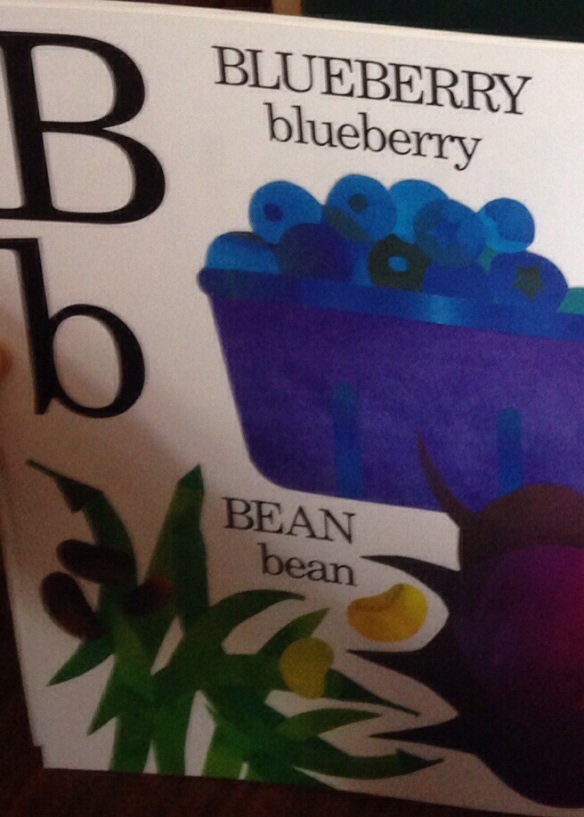
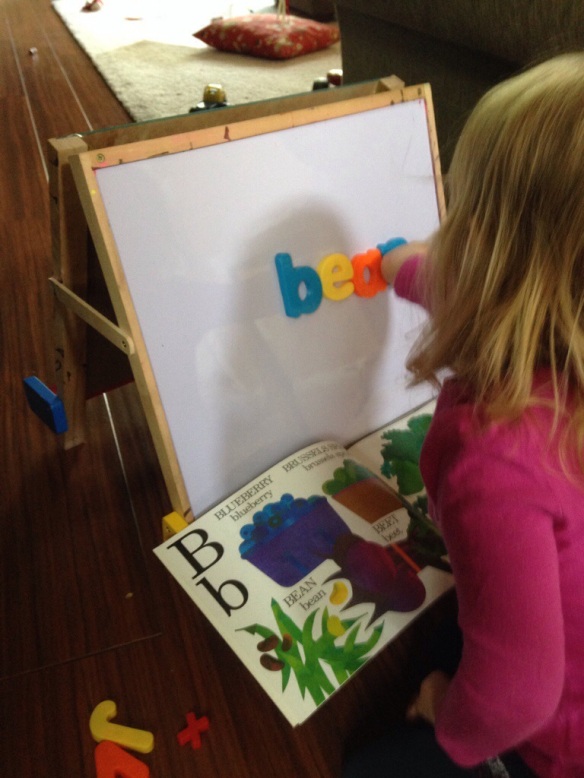
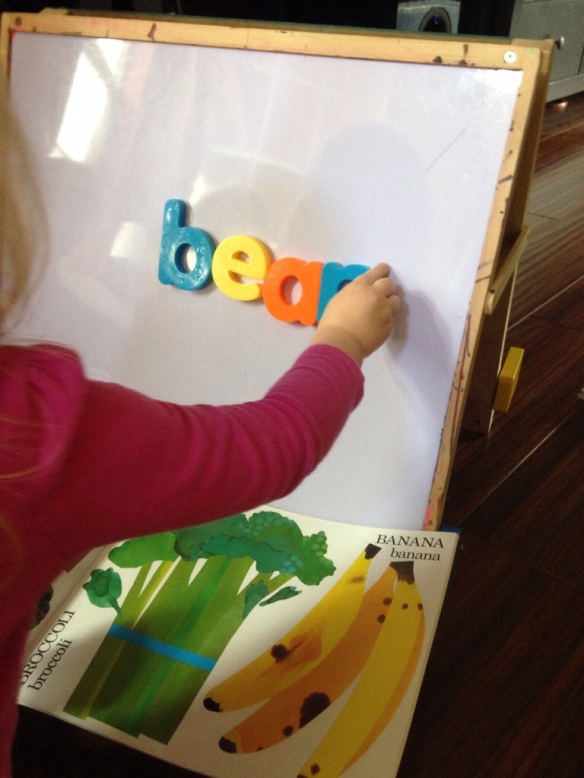


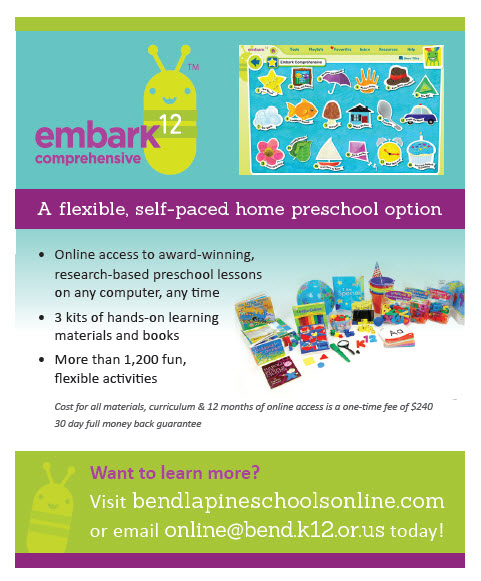
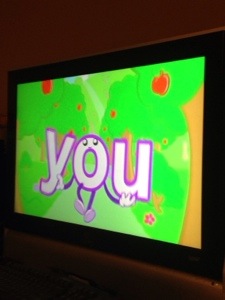

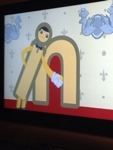
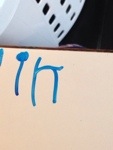
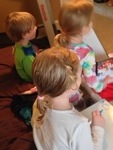
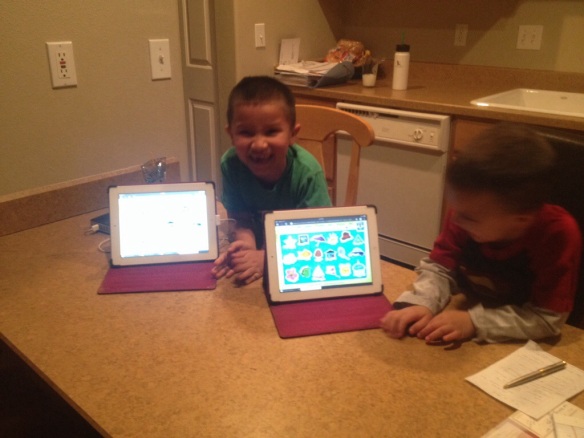
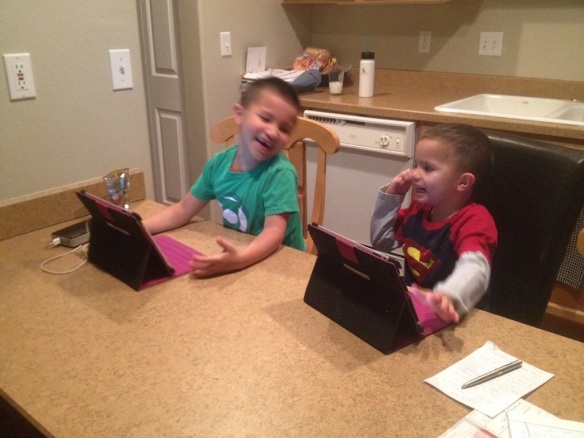
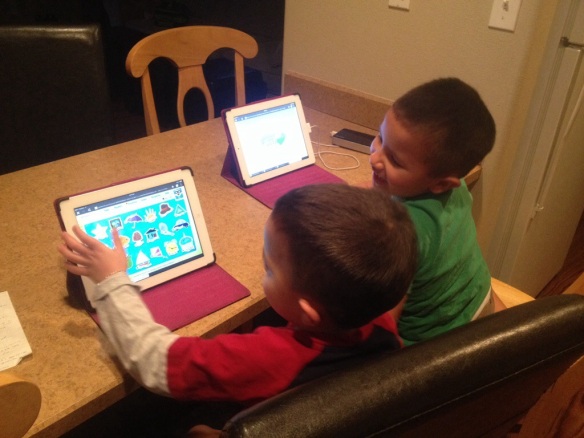







 This screen shot is of the farm she can build. Her on-site pre-school is a “farm” so she relates to this.
This screen shot is of the farm she can build. Her on-site pre-school is a “farm” so she relates to this. 
 Happy Learning!
Happy Learning!





